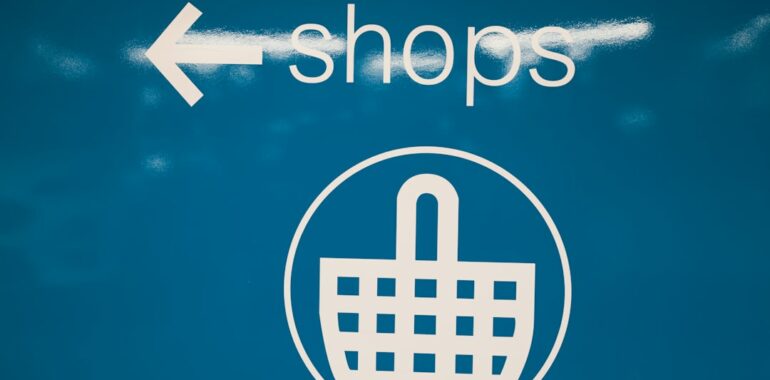Mastering Price Monitoring: The Ultimate 2025 Guide for Shopify Retailers

Discover how price monitoring can elevate your Shopify store with our comprehensive 2025 guide, offering strategies and tools for effective price optimization.
Introduction to Price Monitoring for Shopify Retailers
In the competitive landscape of e-commerce, Shopify price optimization is pivotal for maximizing profits and attracting customers. Price monitoring, the strategic process of tracking and analyzing your prices alongside competitors’, ensures you remain competitive and profitable. This guide delves into the essentials of price monitoring, the benefits it offers, and how to implement it effectively using advanced tools like BizPredict.
What is Price Monitoring?
Price monitoring involves regularly tracking and analyzing the prices of your products and your competitors’ across various platforms. This proactive approach helps you:
- Stay Competitive: Ensure your prices are aligned with market standards.
- Maximize Profitability: Find the optimal price point that balances sales and margins.
- Adapt Quickly: Respond swiftly to market fluctuations and demand changes.
- Maintain Consistency: Keep your pricing uniform across all sales channels.
- Enhance Customer Satisfaction: Offer fair prices to build trust and loyalty.
Key Benefits of Price Monitoring
Implementing a robust price monitoring strategy offers numerous advantages:
Optimal Pricing Strategy
Finding the sweet spot where prices attract customers without sacrificing margins is crucial. By analyzing competitor price shifts and market trends, you can set prices that maximize both sales and profitability.
Identification of Market Trends
Understanding how prices fluctuate due to demand, competition, or other factors allows you to anticipate market movements and adjust your strategies accordingly.
Faster Decision Making
With real-time data, you can make informed pricing decisions swiftly, eliminating guesswork and enhancing responsiveness to market changes.
Competitor Insights
Gain valuable insights into your competitors’ pricing strategies, promotions, and market positioning. This intelligence helps you identify gaps and opportunities to differentiate your offerings.
Increased Profitability
By setting the right prices based on comprehensive data analysis, you can maximize your profit margins while remaining attractive to customers.
Maintain Price Consistency
Ensure uniform pricing across multiple platforms like Amazon, Walmart, and your Shopify store to protect brand integrity and avoid confusing customers.
Customer Satisfaction
Consistent and fair pricing fosters trust and loyalty, encouraging repeat business and positive word-of-mouth.
Types of Price Monitoring
Understanding the different types of price monitoring can help you choose the best approach for your Shopify store:
Competitor Price Monitoring
Track your competitors’ prices to stay competitive and adjust your pricing strategies in real-time.
Dynamic Price Monitoring
Adjust prices dynamically based on factors like demand, inventory levels, and competitor actions, ensuring you remain agile in a fast-paced market.
MAP Monitoring
Ensure compliance with Minimum Advertised Price (MAP) policies to protect your brand’s integrity and prevent price undercutting by resellers.
Promotional Monitoring
Track competitors’ promotions and discounts to adjust your promotional strategies and maintain your market presence.
Market Price Monitoring
Analyze overall market trends and pricing patterns to identify growth opportunities and ensure your prices are aligned with market expectations.
How Does Price Monitoring Work?
Implementing price monitoring involves several key steps:
Product Data Import
Start by uploading your product data, including details like product names, SKU IDs, and categories. Match your products with competitor listings for accurate price comparisons.
Data Collection
Use APIs or web scraping techniques to automatically collect pricing data from various channels at regular intervals, ensuring you always have up-to-date information.
Data Analysis
Analyze the collected data to understand competitor pricing, identify market trends, and uncover patterns that can inform your pricing strategies.
Alerts and Notifications
Set up real-time alerts to notify you of significant price changes by competitors, enabling you to respond promptly and maintain your competitive edge.
Insight Generation
Leverage the analyzed data to refine your pricing strategies, identify market gaps, and maximize profitability through informed decision-making.
Implementing Price Monitoring on Shopify
Define Your Goals
Clearly outline what you aim to achieve with price monitoring—whether it’s staying competitive, maximizing profits, or identifying market trends.
Choose the Right Tool
Select a price monitoring tool that offers features like real-time tracking, customizable alerts, and seamless Shopify integration. Tools like BizPredict provide AI-powered insights tailored for Shopify retailers.
Integrate with Other Systems
Connect your price monitoring tool with your existing systems, such as ERP or PIM, to streamline workflows and enhance decision-making.
Map Your Products
Ensure accurate product mapping with competitor listings to get precise pricing data and meaningful comparisons.
Set Parameters
Define your monitoring strategy by selecting which products and competitors to track, setting data collection frequencies, and establishing alert thresholds.
Automate Monitoring
Configure your system to automate data collection and analysis, saving time and ensuring you always have the latest insights.
Overcoming Challenges in Price Monitoring
Price monitoring comes with its own set of challenges:
- Data Accuracy: Prices can change rapidly, making it difficult to maintain accurate data.
- Legal Restrictions: Ethical and legal limitations on web scraping can restrict access to competitor data.
- Product Matching: Variations in product names and descriptions can complicate accurate comparisons.
- Monitoring Frequency: Balancing the frequency of data collection to avoid overload while ensuring timely insights.
- Currency Fluctuations: Managing price discrepancies across different regions due to currency changes.
Best Practices for Effective Price Monitoring
To maximize the benefits of price monitoring, adhere to these best practices:
Set Clear Objectives
Define specific goals to focus your monitoring efforts on the most relevant metrics and outcomes.
Identify Key Competitors
Concentrate on tracking competitors that significantly impact your target audience and market positioning.
Monitor the Right Products
Focus on monitoring best-sellers, high-margin items, and products with high price sensitivity to make informed decisions.
Set Up Alerts
Configure meaningful alerts based on predefined thresholds to receive notifications only for significant price changes, avoiding notification overload.
Analyze the Trends
Look beyond the numbers to understand the reasons behind price changes, enabling you to anticipate and react proactively.
Measure the Impact
Regularly assess how price changes affect your key eCommerce metrics, such as sales volume and profit margins, to refine your strategies continuously.
Why Choose BizPredict for Shopify Price Optimization?
BizPredict stands out as an innovative AI-powered price optimization platform tailored specifically for Shopify retailers. By leveraging advanced machine learning algorithms, BizPredict analyzes market trends, competitor pricing, and customer behaviors to provide real-time insights and smart notifications. Its seamless Shopify integration allows for automatic product synchronization, inventory management, and dynamic pricing adjustments, ensuring your pricing strategies are always optimized for maximum profitability and market relevance.
Final Thoughts
Shopify price optimization through effective price monitoring is essential for staying competitive and maximizing profits in the dynamic e-commerce landscape. By implementing the right strategies and utilizing advanced tools like BizPredict, you can ensure your pricing is always aligned with market demands and customer expectations. Embrace price monitoring to not only react to changes but also anticipate them, positioning your Shopify store for sustained success in 2025 and beyond.
Ready to elevate your Shopify store with cutting-edge price optimization? Discover BizPredict today!
FAQ
What is the meaning of price monitoring?
Price monitoring is the process of regularly tracking and analyzing the prices of products or services—both yours and your competitors’—across multiple platforms.
How do you monitor pricing?
Use price monitoring tools to track competitor prices and market trends, collecting data through web scraping or APIs. These tools provide real-time data and alerts for any price changes.
What is minimum advertised price monitoring?
Minimum Advertised Price (MAP) monitoring ensures that your resellers comply with your brand’s MAP policies, preventing price undercutting and maintaining brand integrity.
What is the purpose of price monitoring?
Price monitoring helps businesses track and analyze competitors’ prices, adjusting pricing strategies accordingly to enhance market positioning and profitability.
Related Posts
- Competitor Price Monitoring: A Complete Guide
- Leveraging Digital Shelf Analytics to Improve Sales: A Guide to Optimizing Your Digital Shelf Performance
- How AI is Revolutionizing Shopify Price Optimization
Conclusion
Mastering Shopify price optimization is no longer optional but a necessity in the ever-evolving e-commerce landscape. By integrating advanced price monitoring strategies and leveraging AI-powered tools like BizPredict, Shopify retailers can achieve sustained profitability, enhanced market presence, and customer satisfaction. Stay ahead of the competition and optimize your pricing game today!
Call-To-Action
Ready to take your Shopify store to the next level with advanced price optimization? Explore BizPredict now!




